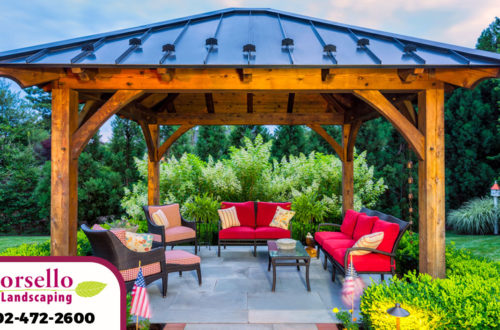The landscape of your home very much shapes the way the exterior of your house is viewed. There are many additional benefits to great landscaping, for instance — proper landscaping can even reduce the need for central air conditioning use by half. It is also a great pleasure to enjoy your outdoor space with friends and family
The hard aspects of your yard — including outdoor kitchens, walkways, firepits, and other unique hardscapes — are very important, but when it comes to the plants, shrubs, and trees in your yard, you need the help of professional landscape services.
Check out this list of ways to prepare your outdoor landscape plantings for the winter:
1. Fertilize Your Trees
As your soil becomes moister, trees and shrubs actually start growing again in the fall. That makes this a perfect time to fertilize your trees. By fertilizing in the fall, your soil will become more productive, by increasing nutrient availability and encouraging root growth. Your trees and shrubs will be much more likely to successfully overwinter if they have a healthy root system.
2. Cut Back the Perennials
As plants die back and frost settles in, it is important to cut back your perennials to within about an inch of the ground. Later, it might be wise to consider adding light mulch to the top, to keep the perennials from freezing.
3. Plant Bulbs
The cool air and warm soil of the autumn is often the best time to plant bulbs. Try to get them in the ground by mid-October, and any new trees or shrubs by the end of October. Your work now will yield beautiful results come summertime.
4. Trim Now
For some species, trimming is very important. Trimming during the dormant season can prevent the start of diseases like fire blight. It is also a good time to prune many deciduous trees and overgrown evergreens and spruce trees.
5. Aerate, Aerate, Aerate
Your lawn will do much better at faring the winter weather if you aerate it while it is still green. Aeration breaks up the dry, compacted soil and allows water and nutrients to reach the roots.
Contact your local landscapers for professional advice and care for your landscape planting.
